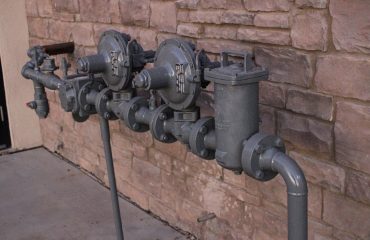body {
font-family: sans-serif;
line-height: 1.6;
}
h1, h2, h3 {
color: #333;
}
Navigating the complex world of European manufacturing standards can be daunting. This comprehensive guide will delve into the intricacies of EN standards, explaining their significance, the process of achieving compliance, and the benefits it offers your business. Understanding and adhering to these standards is not just about avoiding penalties; it’s about building trust, enhancing your reputation, and accessing wider markets.
Understanding EN Standards: A Foundation for Quality and Safety
EN standards, developed by the European Committee for Standardization (CEN), represent a crucial set of technical specifications that dictate minimum requirements for products, processes, and services across various industries within Europe. These standards are not legally binding in themselves, but many are referenced or adopted into national laws and regulations. This means complying with EN standards is often a prerequisite for selling your products legally within the European Union and the European Economic Area. They cover a vast array of sectors, from construction and machinery to electrical appliances and food safety, ensuring a consistent level of quality and safety across the continent. Understanding which specific EN standards apply to your manufacturing process is the first critical step.
The Process of Achieving EN Standard Compliance: A Step-by-Step Guide
Achieving compliance is a systematic process requiring careful planning and execution. It typically involves several key stages:
- Identification of Applicable Standards: Thoroughly research and identify all relevant EN standards applicable to your products and processes. This often requires expertise in the specific field and may involve consulting with industry specialists.
- Gap Analysis: Compare your current manufacturing processes and product specifications against the identified EN standards. This will pinpoint areas where your operations need improvement to meet the required standards.
- Implementation of Corrective Actions: Develop and implement a plan to address the identified gaps. This may involve upgrading equipment, modifying processes, retraining staff, or sourcing compliant materials.
- Internal Audits: Regularly conduct internal audits to ensure consistent compliance with the implemented changes. This proactive approach helps identify potential issues early on and prevents costly setbacks.
- Third-Party Certification (Optional but Recommended): Seeking third-party certification from a recognized accreditation body provides independent verification of your compliance, enhancing credibility and trust among customers and regulatory bodies. This certification process often involves rigorous testing and audits.
Importance of Testing and Verification in Meeting EN Standards
Rigorous testing and verification are essential components of the compliance process. These activities ensure that your products and processes consistently meet the specified requirements. Testing can involve various methods, depending on the specific EN standard, including:
- Material Testing: Assessing the properties of raw materials to ensure they meet the required specifications.
- Performance Testing: Evaluating the performance characteristics of the finished product under various conditions.
- Safety Testing: Determining the safety of the product to prevent hazards and ensure user protection.
- Environmental Testing: Assessing the environmental impact of the product and its manufacturing process.
Maintaining detailed records of all testing activities is crucial for demonstrating compliance to auditors and regulatory bodies. Accurately documenting test results and any deviations is essential.
Benefits of Adhering to EN Standards: Beyond Compliance
The advantages of meeting EN standards extend far beyond mere compliance. Adhering to these standards provides numerous benefits, including:
- Enhanced Product Quality and Safety: Meeting EN standards ensures your products meet a recognized level of quality and safety, reducing the risk of defects and improving customer satisfaction.
- Increased Market Access: Compliance with EN standards is often a prerequisite for accessing the European market. It opens doors to a wider customer base and expands your business opportunities.
- Improved Brand Reputation and Trust: Demonstrating commitment to EN standards builds trust with customers and stakeholders, enhancing your brand reputation and credibility.
- Reduced Risks and Liabilities: Meeting EN standards minimizes the risk of product recalls, legal disputes, and financial losses associated with non-compliance.
- Streamlined Processes and Efficiency: Implementing EN standards often leads to improved processes, reduced waste, and increased efficiency within your manufacturing operations.
Choosing the Right Certification Body for EN Standards
Selecting a reputable and accredited certification body is vital for ensuring the credibility and validity of your EN standard compliance. Look for bodies that are recognized by national accreditation bodies and have experience in your specific industry. Consider factors such as their reputation, fees, and the scope of their services when making your choice. A thorough due diligence process will help you select a certification body that provides a robust and reliable assessment of your compliance.
Meeting EN standards is a journey requiring dedication and a commitment to quality. By following the steps outlined above and understanding the benefits of compliance, manufacturers can position themselves for success in the competitive European market. This investment in quality and safety will ultimately translate into a stronger brand, increased profitability, and a sustainable competitive advantage.
Tags: EN Standards, European Standards, Manufacturing Compliance, Product Certification, Quality Management




